Situated in Germany’s southwest corner is the Black Forest – or Schwarzwald – renowned for its dark conifer forests, charming villages, thermal spas and myths and mystery. Cuckoo clocks are thought to originate from the area, as are the Grimm Brother’s magical fairytales, which I often read as a child. The area offers countless hiking trails across the highest non-Alpine mountains in Germany, stretching for about 100 miles from Switzerland, along the French border to Baden-Baden, bounded by the Rhine valley to the west and south.
The name itself is enchanting. The Black Forest. Pixies, elves, wizards and fairies come to mind, and my imaginations of the place always brought me back to my childhood imaginations of the Enchanted Forest in Enid Blyton’s Faraway Tree books (which are my favourite books ever). While I was roadtripping around Germany last summer, I just had to experience the Black Forest to see if it would live up to my imaginations. Fairies and other mythical creatures aside, it most certainly did.
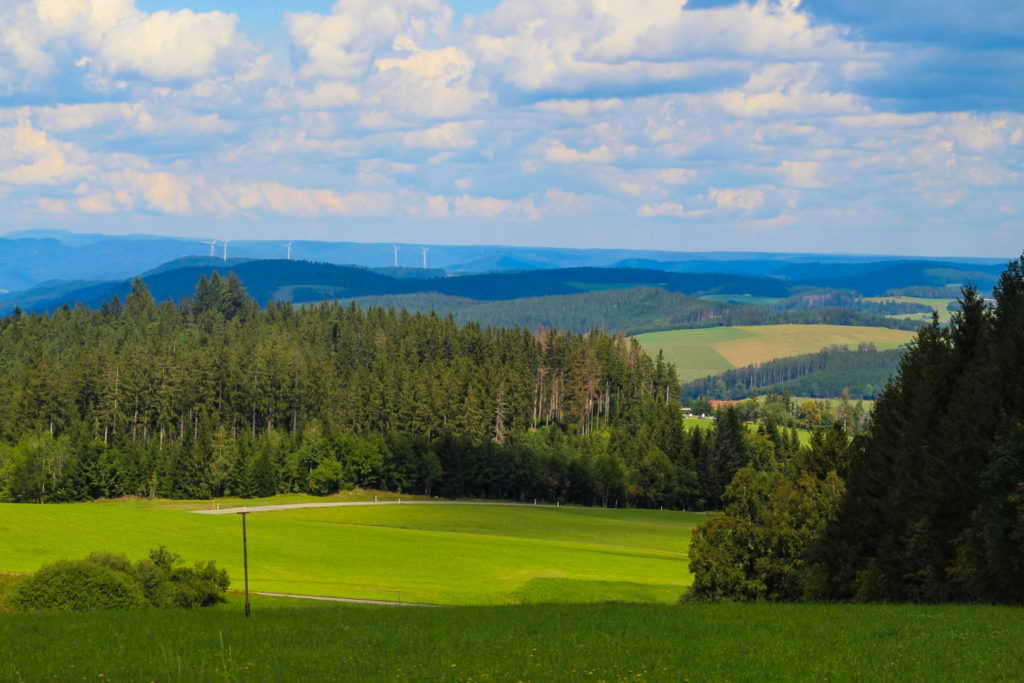
The source of the Danube
After a full day of exploring parts of Switzerland and the German exclave of Büsingen am Hochrhein, I had – rather unexpectedly – ended up sleeping at a parking lot near Donaueschingen in the outskirts of the Black Forest. Since I was already there, I thought I might as well see a bit of the city, and especially the site that put the city on the map, the source of the river Danube.
But brace yourselves, because it’s not as simple as that. Although the Donauquelle, a karst spring in the centre of Donaueschingen, was long thought to be the origin of the Danube, this spring is actually the source of the Donaubach, a short river that flows into the Brigach river. The true source of the Danube is actually located about 1,5 kilometre from the city centre, where the Brigach and Breg rivers confluence and become the Danube. From this spot, the river flows for 2811 kilometres into the Black Sea.
However, the main spring of the Danube is located another 30 kilometres away near Furtwangen where the river Breg has its spring. Breg is longer and has a bigger water flow than Brigach, and is therefore considered the headstream and main water source of the Danube.
Confused yet?
So was I! I only realized that the Donauquelle isn’t the actual source of the Danube when I got there, so I then decided to seek out the spot where the rivers Brigach and Breg confluence. It took a bit of getting lost and lots of confusion to get there, especially since the site is located next to a highway and a building site. Not exactly what I was imagining for the source of the Danube, the second-longest river in Europe!
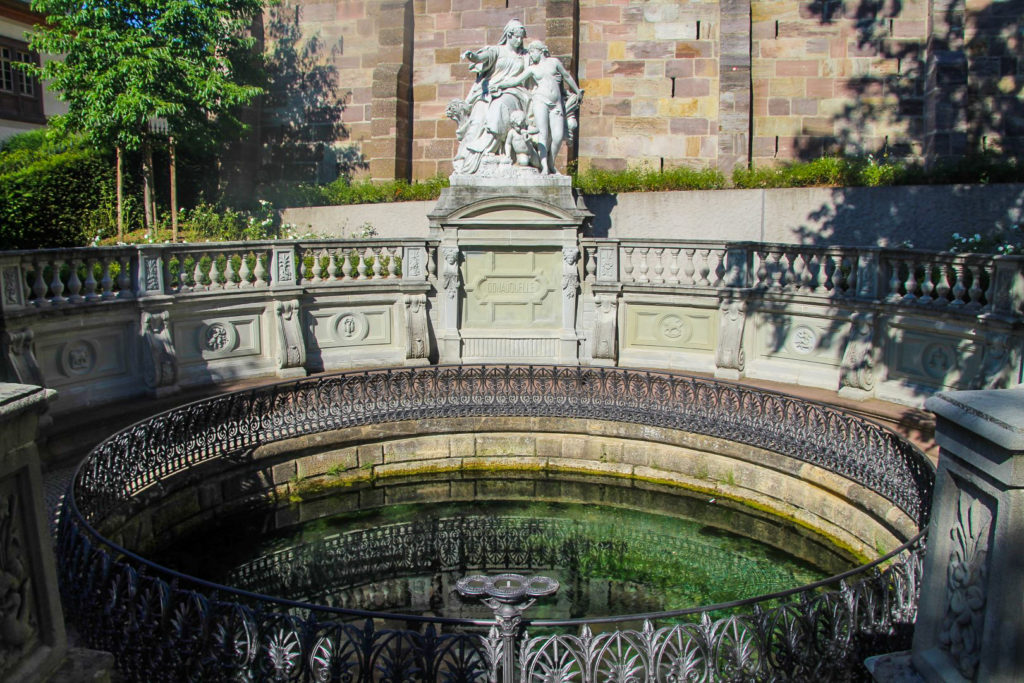

The world’s largest cuckoo clock
After my little Danube adventure, I drove further into the Black Forest in search of fairytales and something quite spectacular, the world’s largest cuckoo clock!
A classic cuckoo clock is a wooden pendulum-regulated clock that strikes the hours with a sound that resembles a common cuckoo’s call, and has an automated cuckoo bird that moves with each note. The origin of the cuckoo clock is unknown, although it’s thought to have been developed in the Black Forest from where the clocks were first exported around the world in the mid-1850s.
The largest of its kind is found in the village of Triberg in the heart of the Black Forest. The clock is based on a much smaller cuckoo clock that is around 100 years old, and it was scaled up sixty times! It is indeed an impressive sight, but the best part of it is the wonderful sounds it makes as it chimes every half an hour.
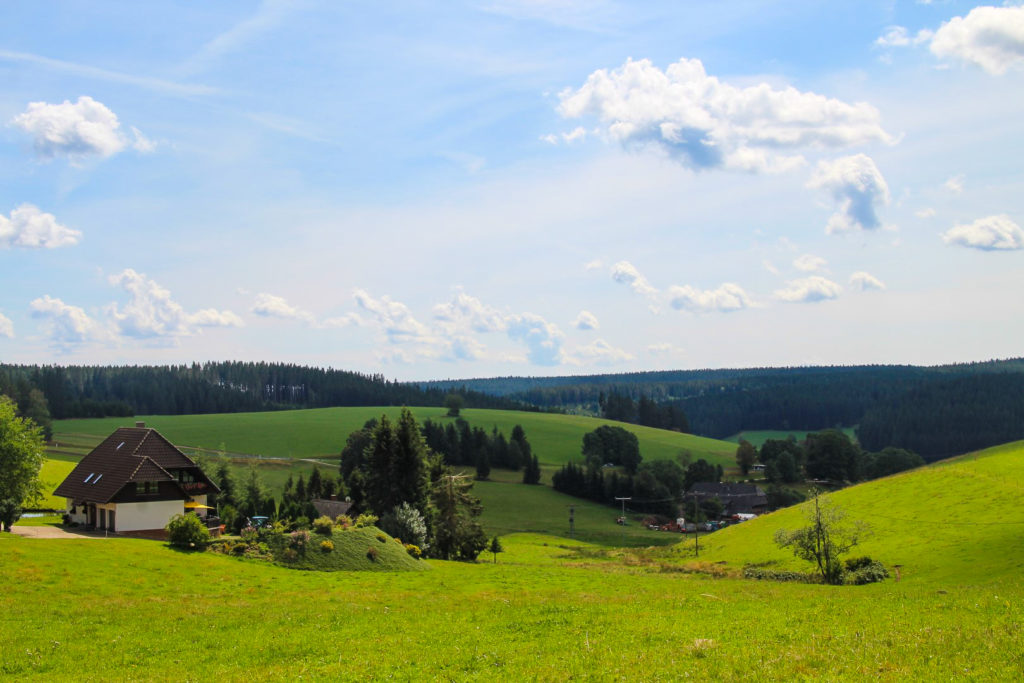


Alluring views in the Gultach valley
When researching the area, I had become quite overwhelmed by the amount of opportunities. The Black Forest area is HUGE and the interwebs was full of recommendations of what to do and see. With just one day to spare for the area, I decided to focus on one area and the choice fell on the village of Schiltach, which I saw mentioned often as one of the most beautiful villages in the area.
Driving to the village, I made my way through the picturesque Gultach valley, which offered captivating views over the dark, forested mountains. I stopped many times just to take in the views and enjoy the fact that I was finally there. Oh, the joys of a roadtrip!
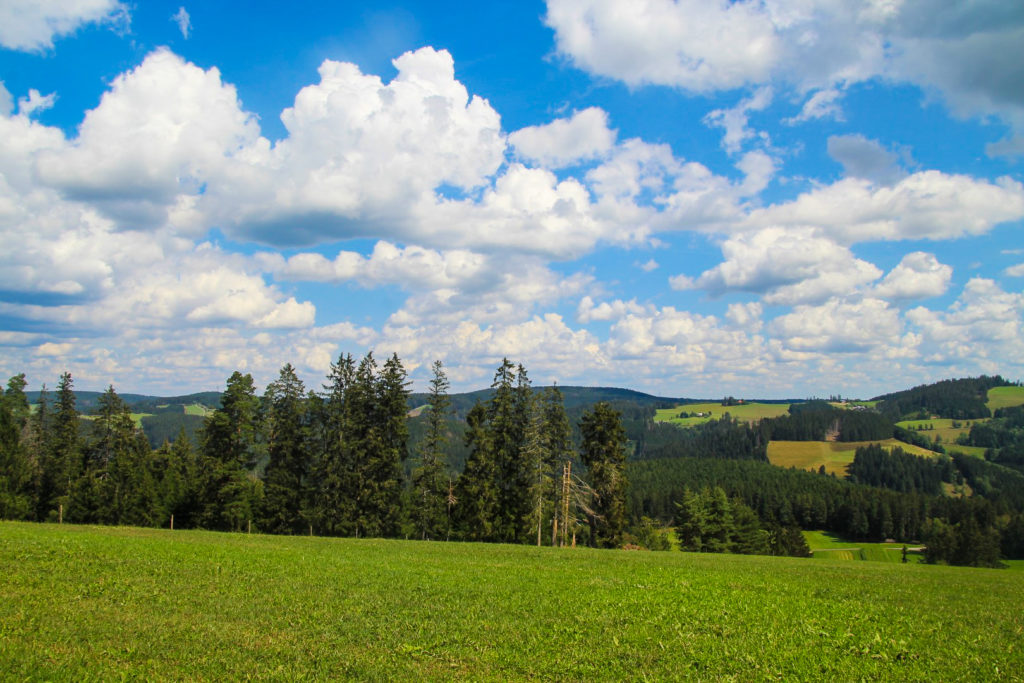
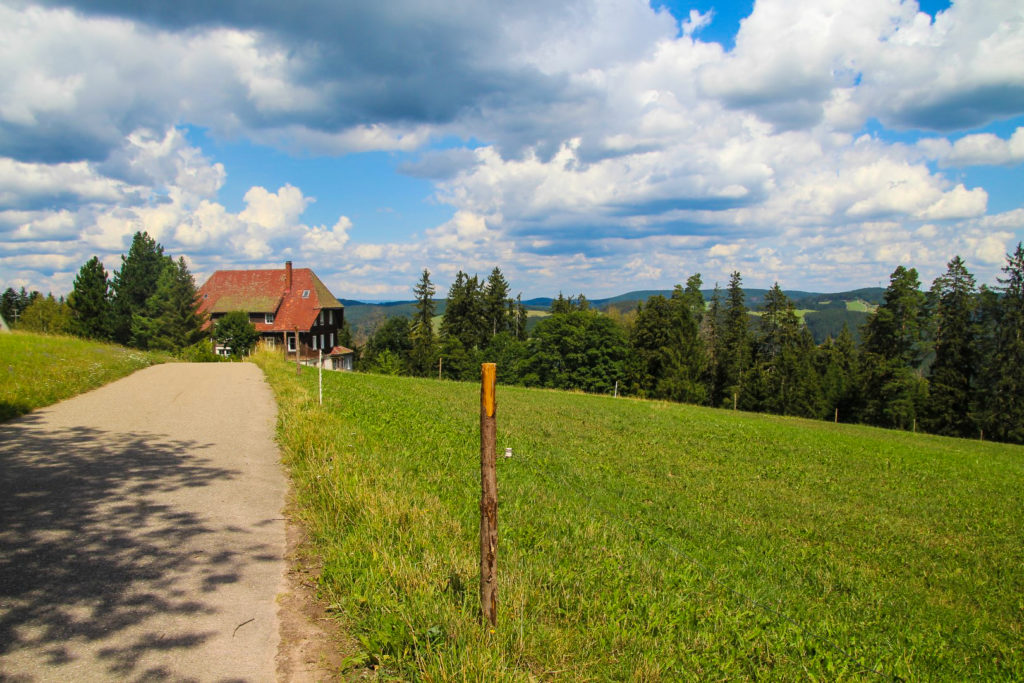
The fairytale village of Schiltach
After an hour on the steep roads through the valley, I arrived in Schiltach, which looked like something out of a fairytale. I’ve seen many gorgeous villages in my short life, but nowhere quite like Schiltach.
Every building is neatly decorated with colourful flowers, and one half of the buildings are half-timbered, while the other half feature windows with brightly painted shutters. Every detail seems thought out carefully.
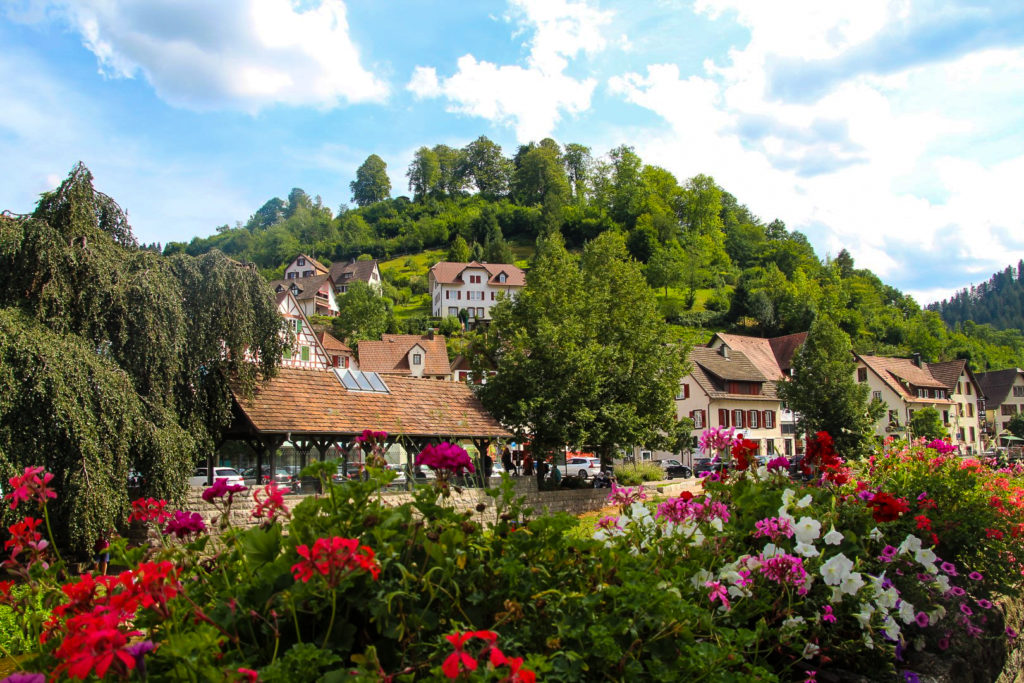

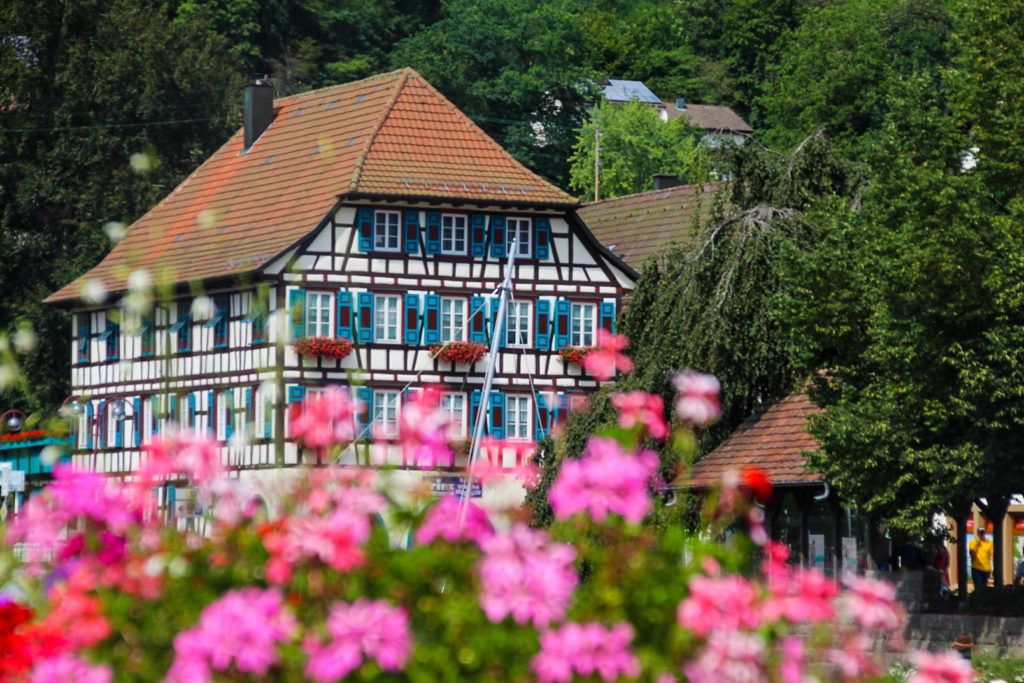
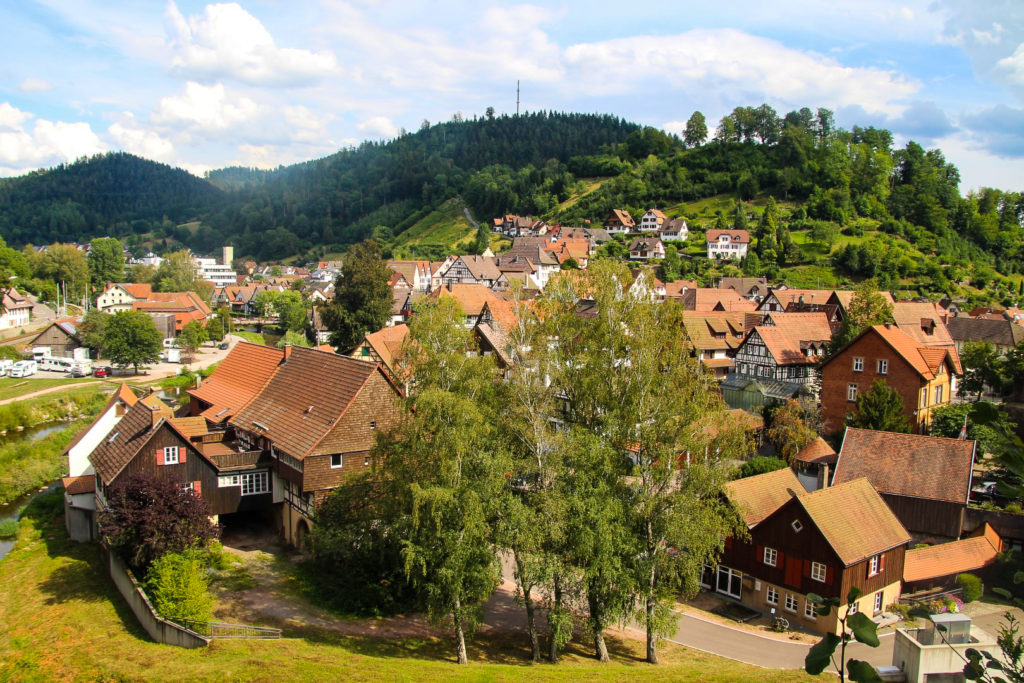
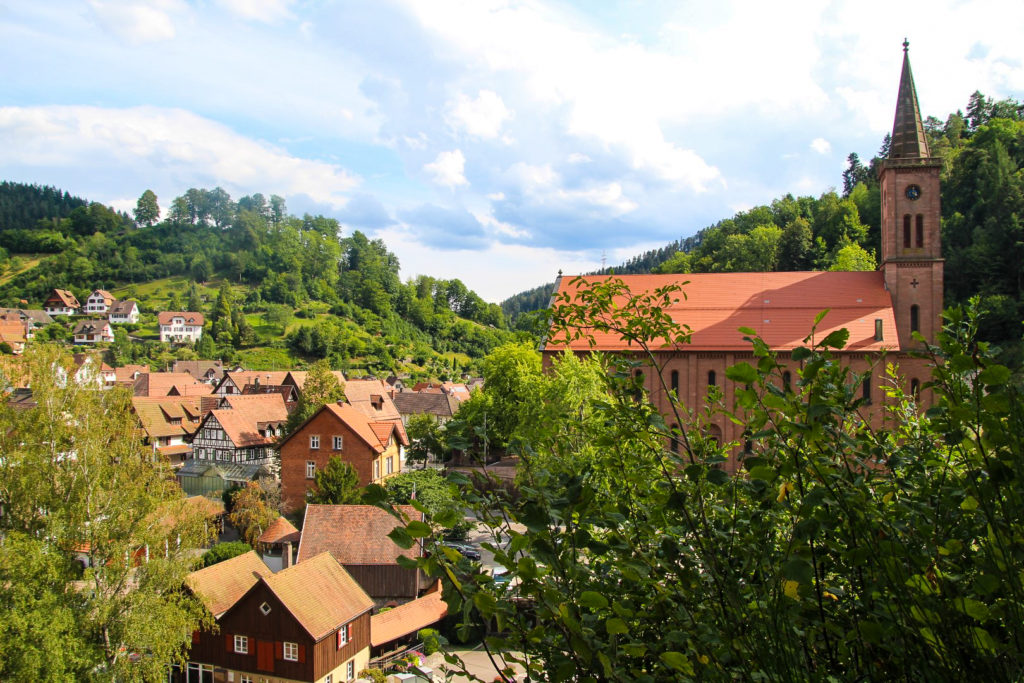
It was incredibly hot in Schiltach, too hot for a hike, to be honest. But I wanted to make the most of being in the Black Forest! So I did decide to go for a little hike, although in the slowest possible tempo you can imagine.
But first, I bought a vegan ice cream and took a long stroll through the village along the rivers Kinzing and Schiltach, from where the village gets its name, both of which are lined by colourful half-timbered cottages and flowers in abundance.
I also walked up a steep cobbled street to the quaint market square, surrounded by historic half-timbered cottages with a gorgeous backdrop of the dark forests beyond. Schiltach is truly spellbinding.
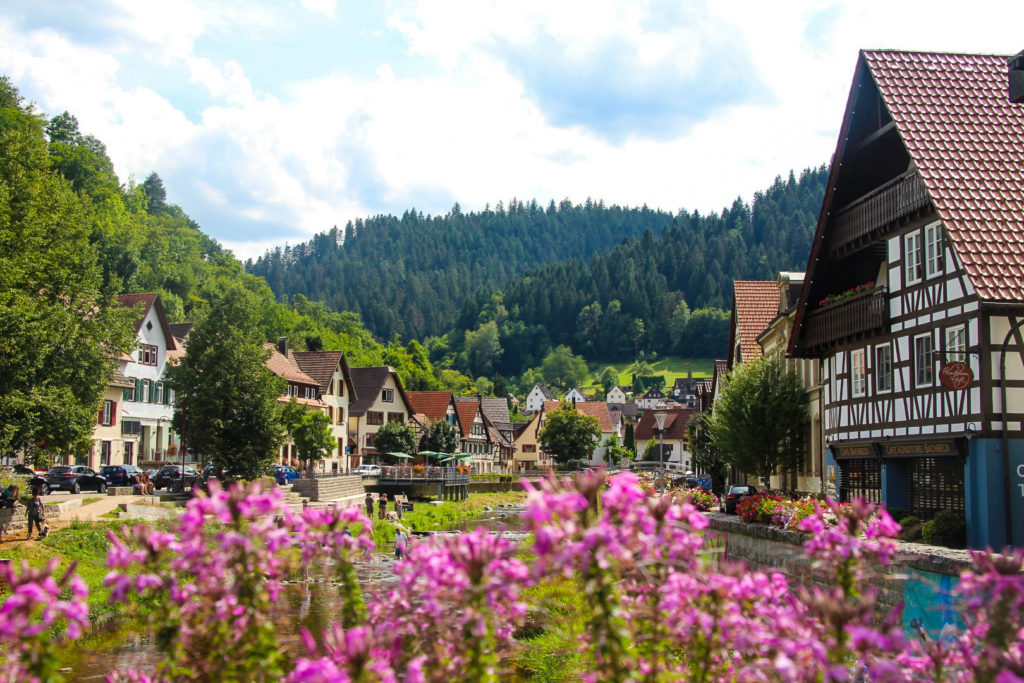


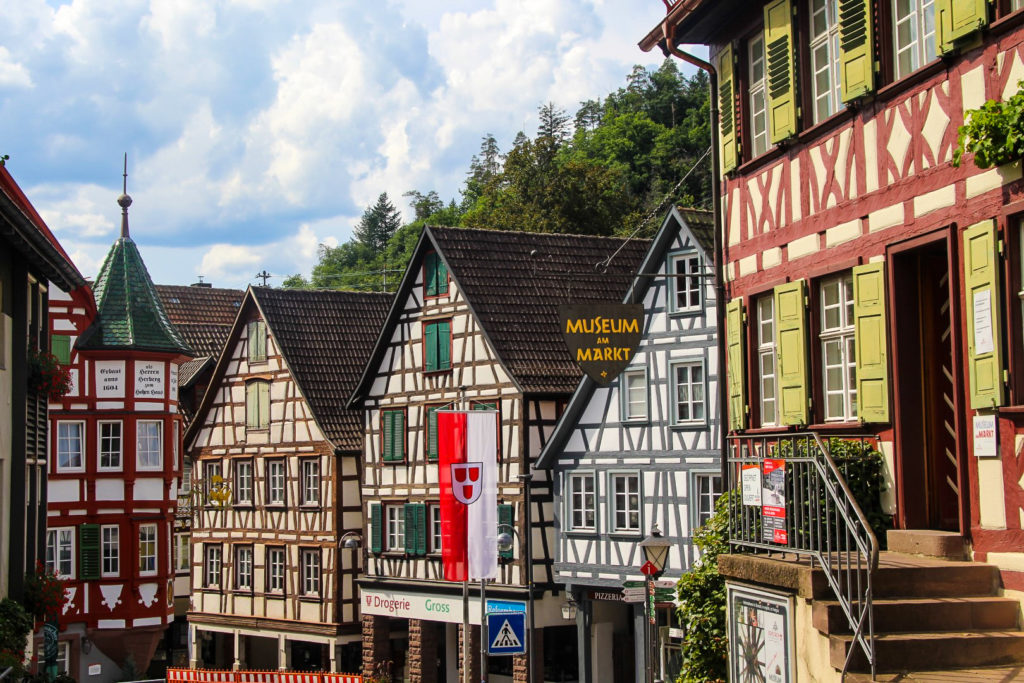
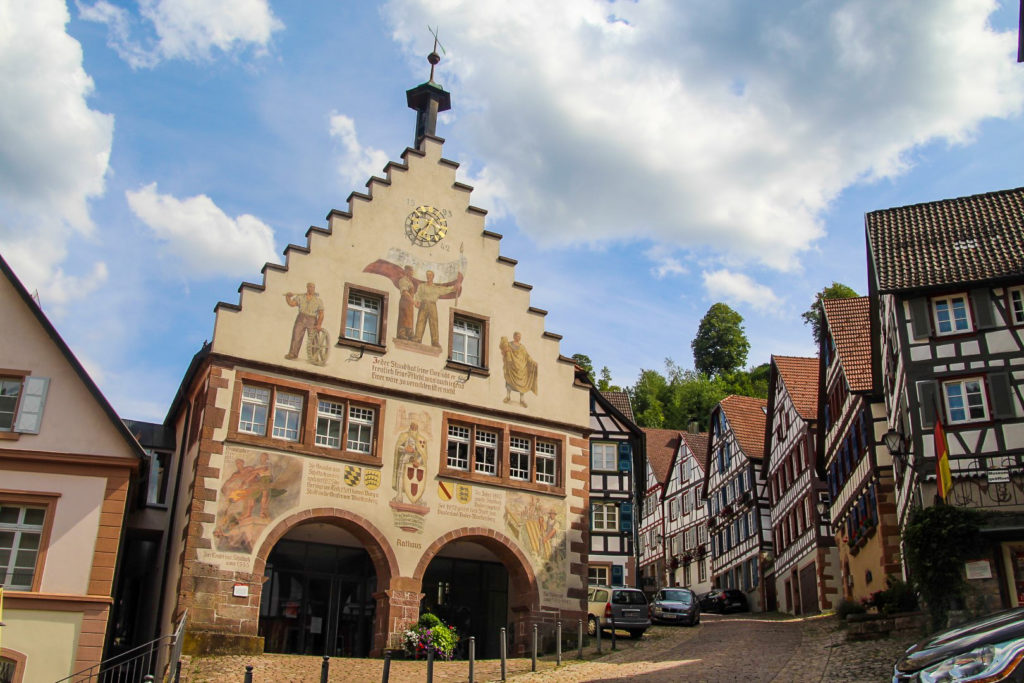
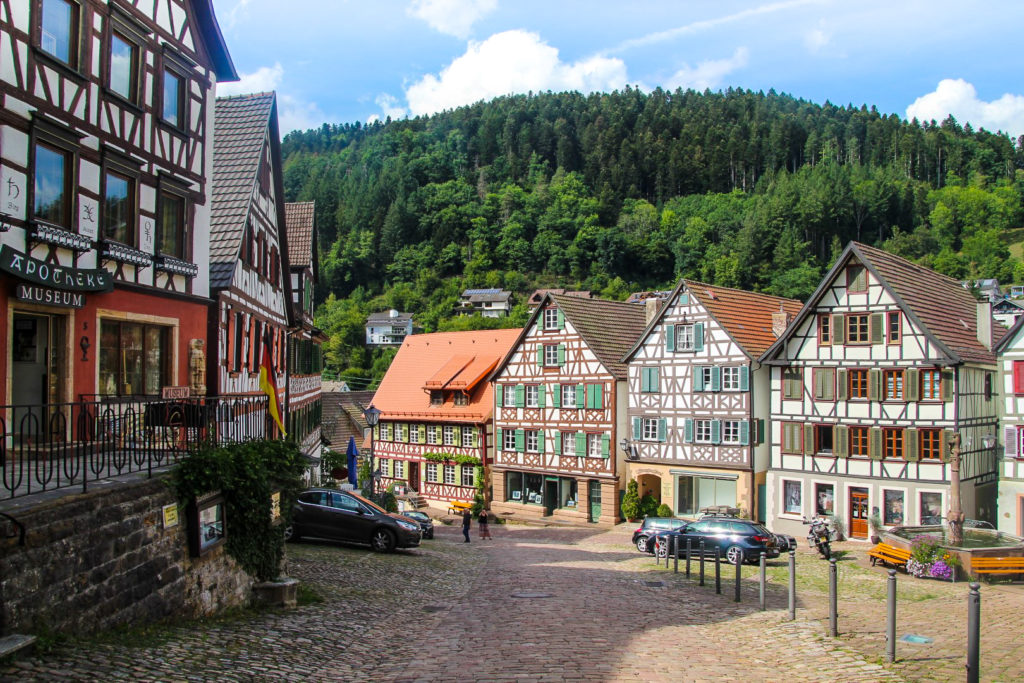
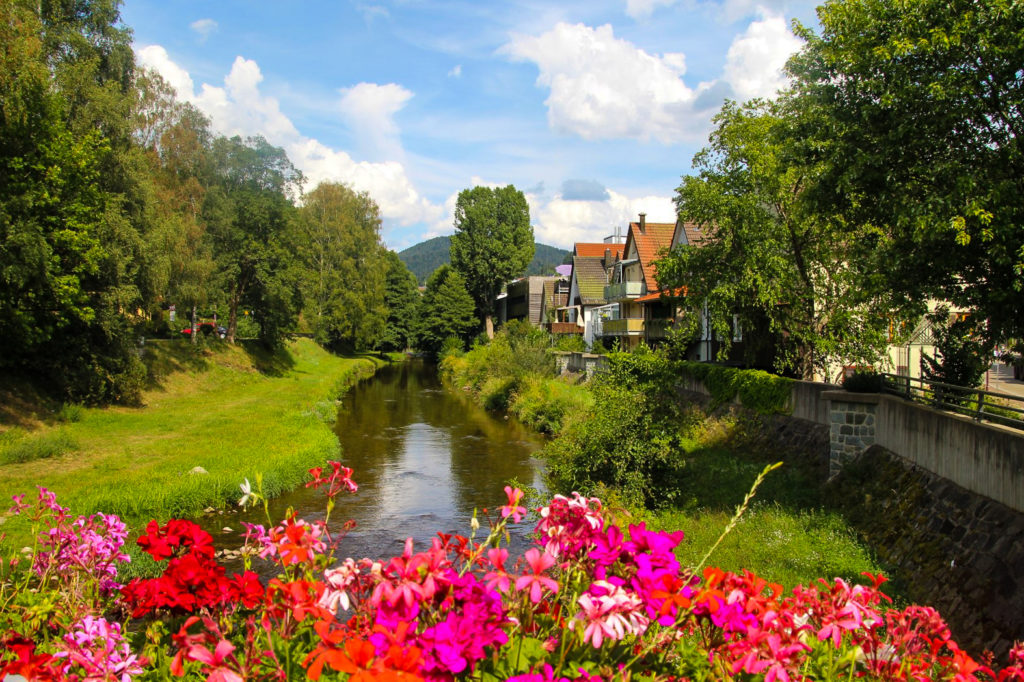
A hike into the forests above Schiltach
The amount of hikes to choose from in the Black Forest had left me overwhelmed and with no plan, so I decided to go for a hike in Schiltach. I looked at the map and discovered a mountain behind the village, Mt. Hüberleskopf at 614 metres. Perfect.
It looked like an easy hike, taking just about an hour from the centre of the village, with an elevation gain of 283 metres. A piece of cake usually, but my legs were still tired from a mountain climb in the Alps three days earlier, and it was 30 degrees celcius. Need I say more?
I took break after break as I pushed myself up the steep hills leading into the dark forest and up the side of the mountain. At one point, I decided to listen to music which gave me some strength and energy I didn’t know I had. I walked a lot faster and before I knew it, I was almost at the summit.
The way to the summit isn’t on an official trail, but it was only a few metres from it so I could easily make my own way. I got to the summit, but it honestly didn’t feel like much of a mountain summit. It was nothing like the feeling I’d had when I got to the summit of Mt. Sorgschrofen. This was more like a hill, and the view was mostly blocked by the tall trees of the Black Forest.
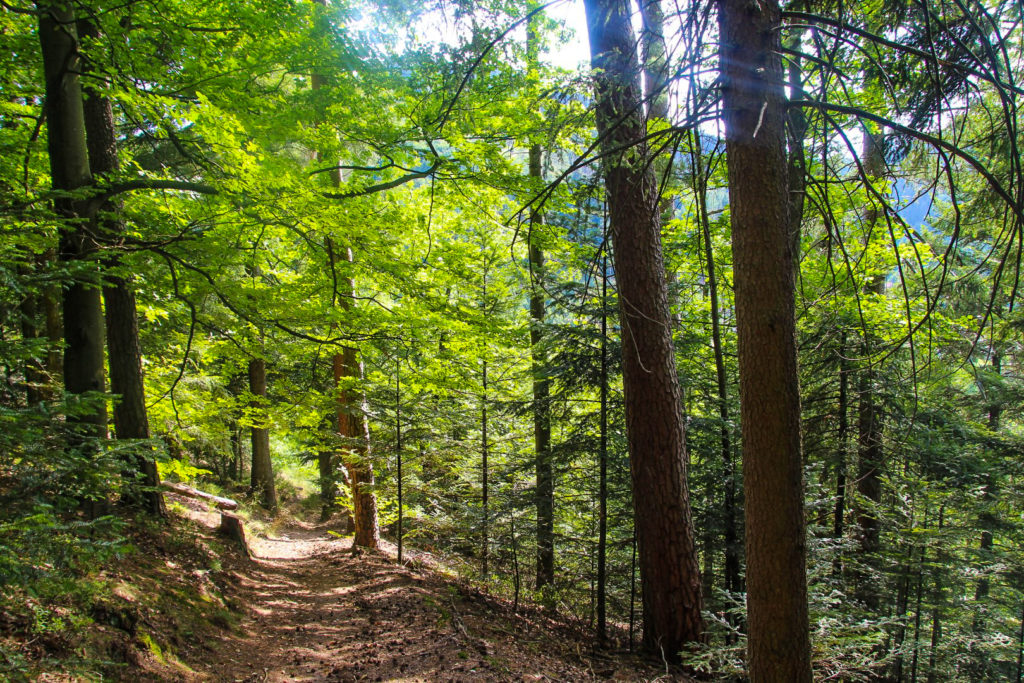
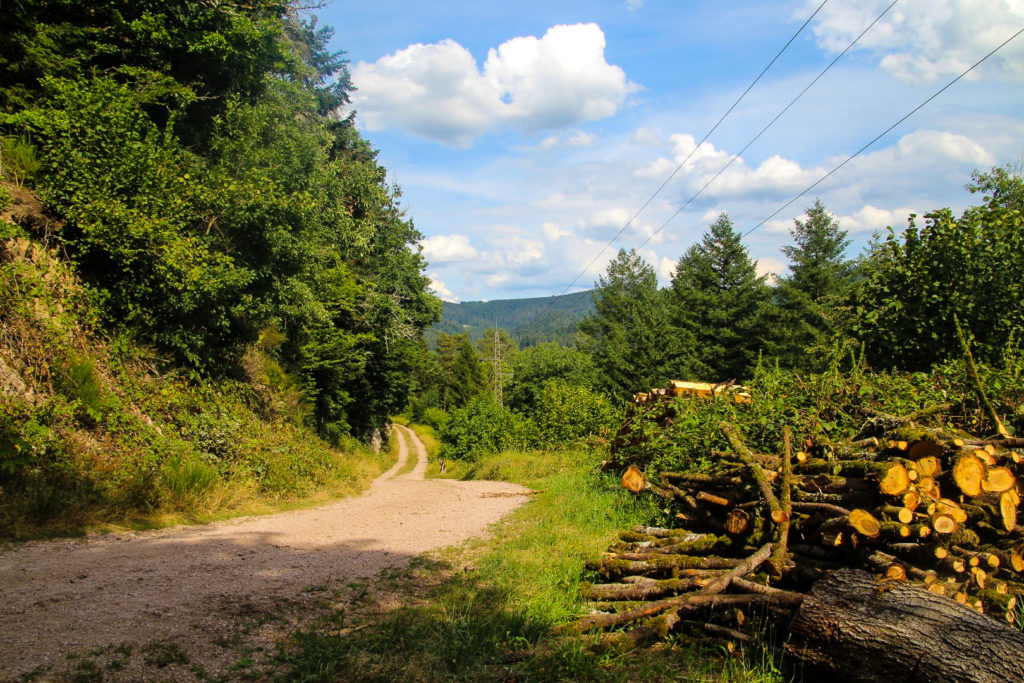

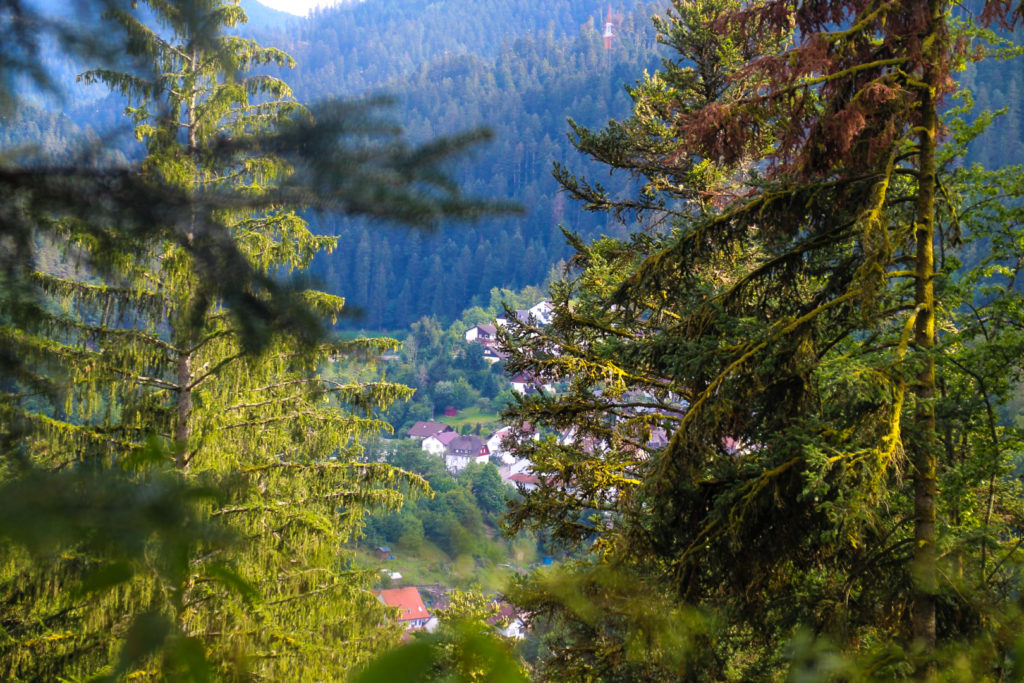
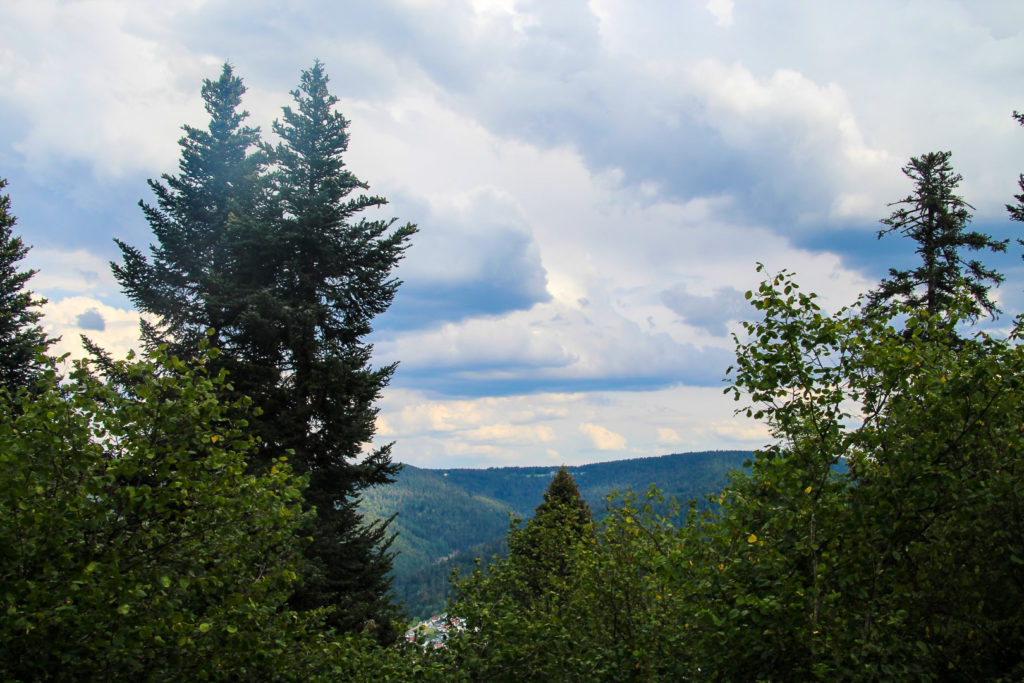
The day was still young so I decided to continue hiking to the mountain Teisenkopf at 764 metres where I was hoping to find a proper viewpoint. But as soon as I started walking in the direction of the mountain, I heard thunder. And thunder (especially its brother, lightning) is one of the greatest dangers when hiking. I had no other choice than to turn around. I don’t think I’ve ever gone down a mountain as fast as I did, I practically ran down the steep paths, minding not to slip on the wet rocks. But then I made a stupid decision.
Instead of following the path I’d come up on, I decided to follow a signpost with the word “Schiltach” on it. Surely that would be a faster route to the village, right? But it wasn’t. I walked and walked and walked, thunder in the distance, and I got further and further away from the village. I kept a lookout for any sign of a path that went down, but the one I was on just kept going gradually up. But eventually – finally – I found an overgrown path leading down towards the village. I didn’t know where it would take me, but it had to be better than the one I was on. I hurried down the path and joined onto a gravel road that was familiar. I was finally on the right track again. Soon after, I saw the first glorious glimpses of Schiltach.
By then, the thunder had stopped and I was able to enjoy the last views of Schiltach as I hiked back down to the car that had waited patiently for me to return from the mountains.

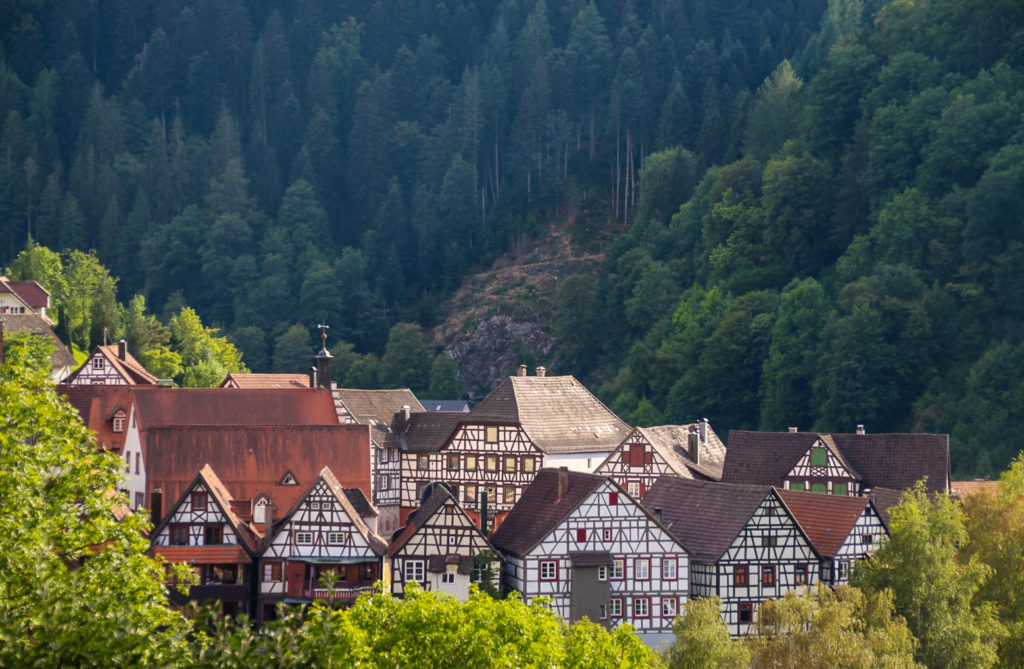
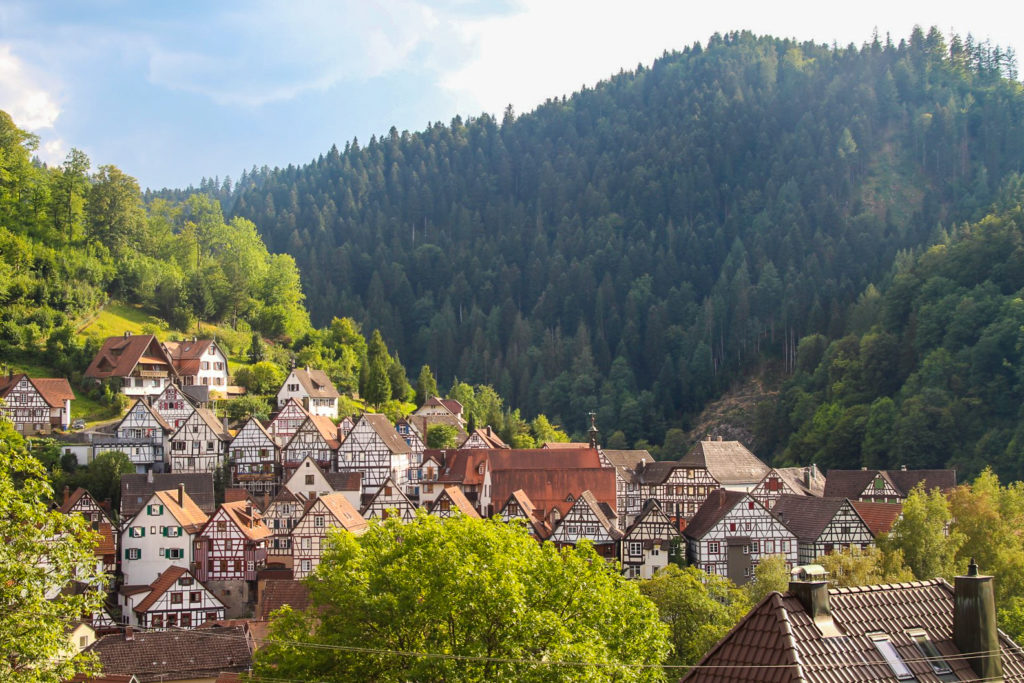
I hadn’t done much driving that day, so I decided to end the day with a 1,5-hour drive to one final destination in the Black Forest, the historic Maulbronn Monastery. I parked my car in a secluded spot up a steep hill, after deciding that the designated parking lot for motorhomes and campervans was too noisy. I fell asleep in the passenger seat and slept until a heavy rainfall woke me up around 3 AM. The rain continued through the night, but when I got up at 7 AM, it had miraculously stopped. A new day had dawned, and it was finally time to visit the monastery.
Maulbronn Monastery is a former Cistercian abbey, founded in 1147, and it’s one of the best-preserved medieval monastic complexes in Europe. Therefore, it was named a UNESCO World Heritage Site in 1993. The complex is surrounded by walls and a tower gate, enclosing what is essentially a small town with a town hall, administrative offices, a boarding school and even a police station. And of course, the church itself and the living quarters of the monks.
Although the monastery buildings are not elaborately decorated, the rooms are grand and the symmetry of the vaults and columns outstanding. And although understated and dull, the murals that decorate many of the ceilings were a treat for the eyes.
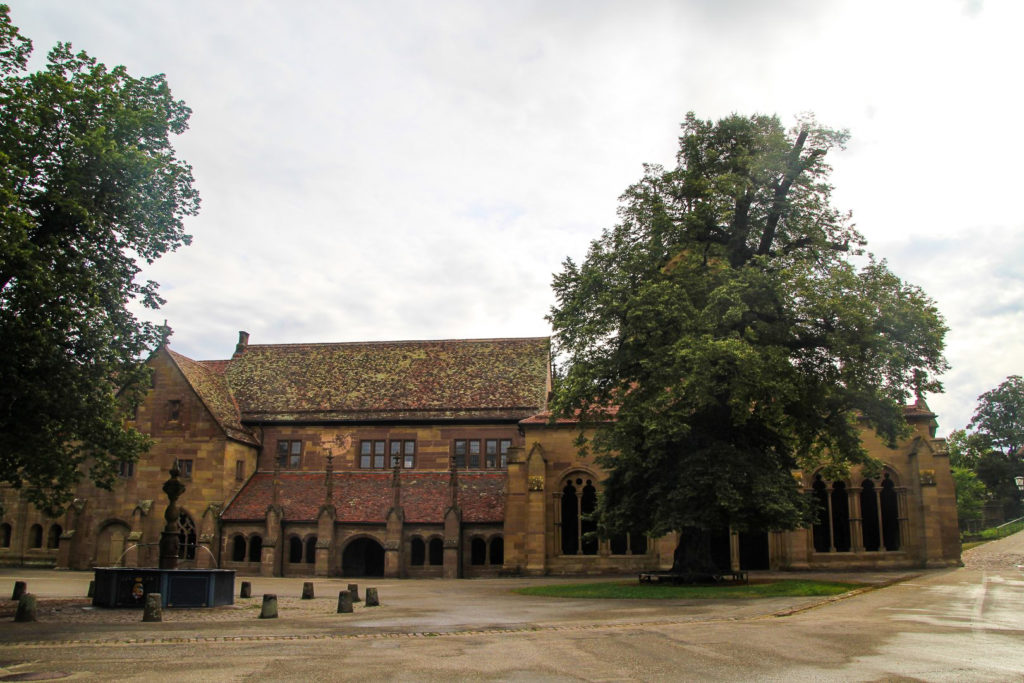
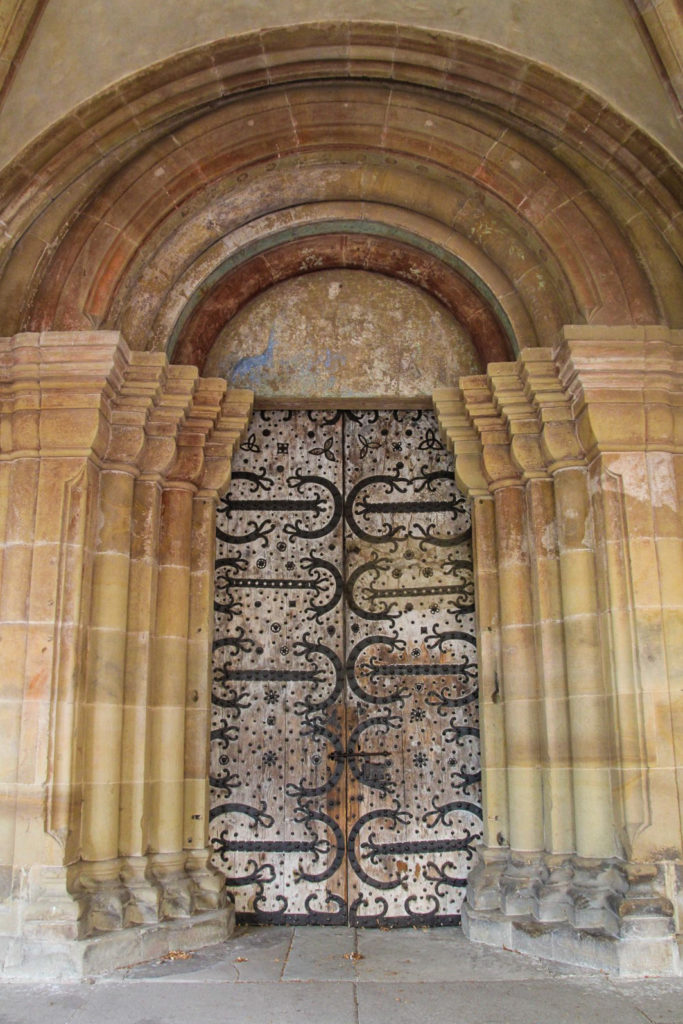
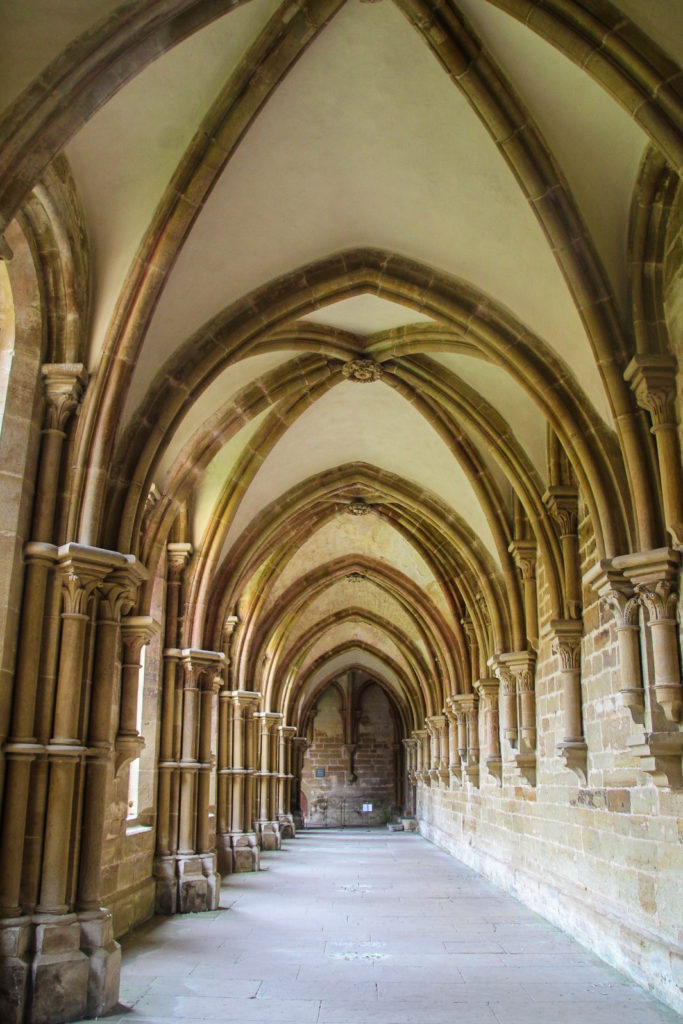
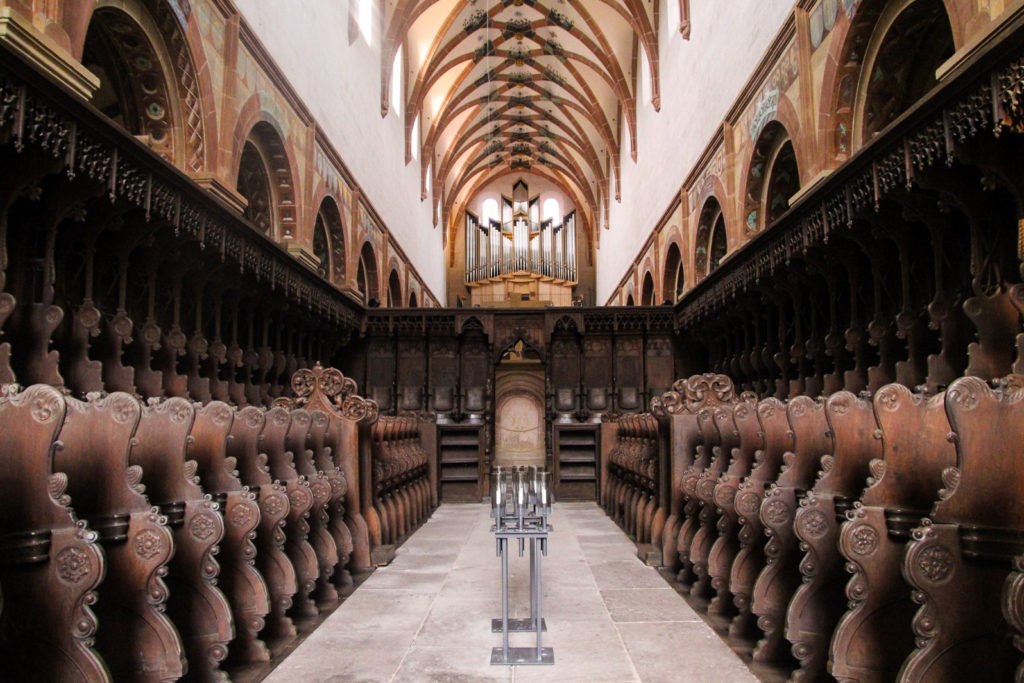

After my morning visit to the monastery, I continued my roadtrip up through Germany. I left the Black Forest behind and set out for a few more UNESCO sites that day. More about them in my next post!
Leave a Comment
Pingback: Days in the Harz Mountains, the northernmost mountain range in Germany – I Live as I Dream on 08/05/2021
Pingback: Heidelberg and cultural wonders in southwestern Germany – Northtrotter on 08/05/2021
Pingback: Hiking in Saxon Switzerland: The most interesting geological region in Germany – Northtrotter on 08/05/2021
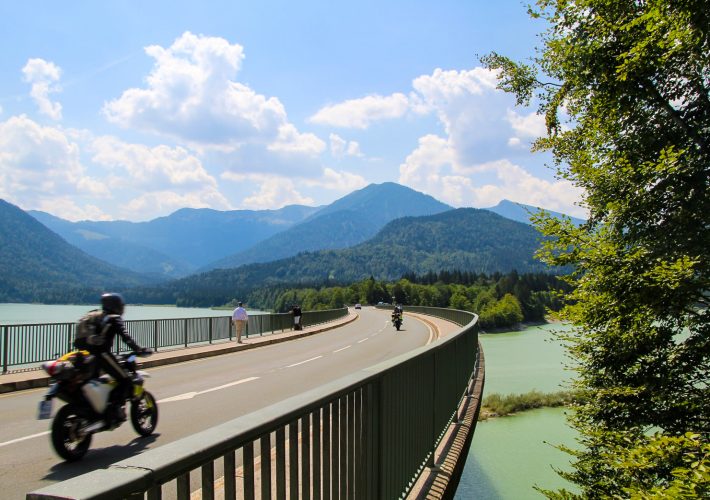

3 COMMENTS